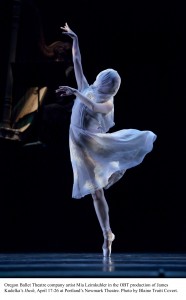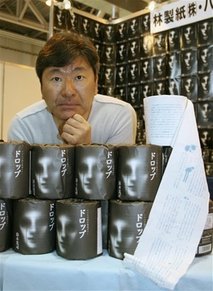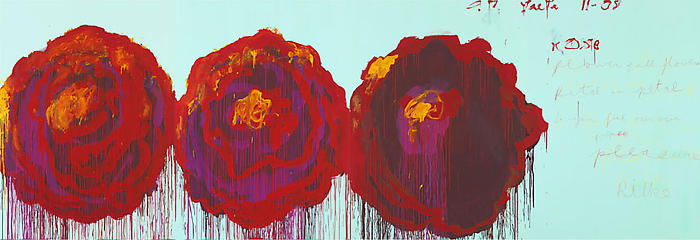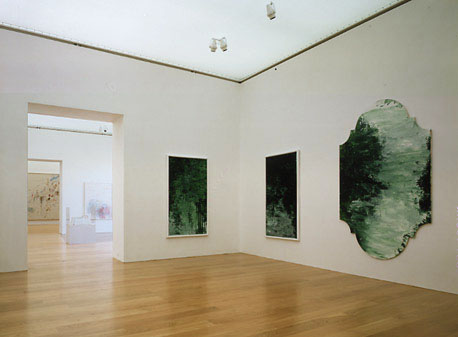A quick Sunday scatter of good stuff in other places:
 *************************
*************************
FEED THE BODY, FEED THE MIND: Under the headline Philbrook Museum of Art Trades Tulips for Tomatoes, artdaily.org reports that Tulsa’s Philbrook — the museum that Brian Ferriso left to become executive director of the Portland Art Museum — is replacing its 3,600-square-foot south formal garden with a vegetable garden and will give the veggies to the Community Food Bank of Eastern Oklahoma to help Oklahomans get through the economic crisis. Now, there’s a conceptual art project we can get behind. Bravo. Too often when times get tough, culture and shelter (and schools, for that matter) get tossed into an either/or funding game, turning natural allies into competing animals at a shrinking watering hole. As this project reveals, it doesn’t have to be that way.
**************************
STEVE MARTIN UNLEASHED: The Oregonian’s Marty Hughley has a good report in Sunday’s O! section on how things turned out when students from the local high school finally got to put on their production of Steve Martin‘s stage comedy Picasso at the Lapin Agile. They performed it at Eastern Oregon University instead of at the high school because the school board, after receiving parental complaints about the play’s purported immorality, called the thing off.
Martin then stepped in and paid for the production himself, and in a letter to the local paper he came up with this gem, which Hughley quotes:
“I have heard that some in your community have characterized the play as ‘people drinking in bars, and treating women as sex objects.’ With apologies to William Shakespeare, this is like calling Hamlet a play about a castle.”
Yes, Xenophobia, there is an Oregon. But the good news to take from Marty’s story is that it doesn’t have to be that way.
**************************
IN SWITZERLAND, A SWING TO THE RIGHT: A few art insiders complained when Michael Kimmelman, the New York Times’ chief art critic, decamped to Europe for a year instead of paying attention to what was happening on the art scene stateside. Not me. I’ve enjoyed his Abroad reports. They’ve helped an already top-notch critic broaden his knowledge even further, and they’ve given readers a lot of good stories they wouldn’t have had otherwise.
One of the best is last week’s report from Zurich, In Quiet Switzerland, Outspoken Rapper Takes on the Far Right, about an Estonian-born Swiss rapper stage-named Stress who’s stirred up some welcome controversy by tackling directly in his lyrics chemicals tycoon Christoph Blocher, powerful head of the ultranationalist Swiss People’s Party, who is one scary dude. Like Hitler and Stalin before him, Blocher uses his own sanitized vision of cultural purity in the arts to push his ideal of the perfect, and perfectly xenophobic, homeland. Kimmelman writes:
Mr. Blocher used his own collection of works by 19th-century painters like Albert Anker and Ferdinand Hodler in shows he organized to illustrate what he has said represent wholesome Swiss ideals: women in the home, farmers milking cows, a nation historically separated from outsiders by more than just mountains.
Steve Martin, the good people of Switzerland need you. Now.
**************************
A CREATIVE WAKE-UP CALL IN PORTLAND?: Also in Sunday’s O! section of The Oregonian, visual arts critic D.K. Row files this intriguing report on how the flap over City Hall’s recent push to bulldoze Portland’s Memorial Coliseum has lit an activist fire under at least a slice of the city’s creative class. D.K. quotes architect/activist Stuart Emmons:
“We’ve just said, ‘Enough.’ We need to speak out for what we believe in and quit allowing politics to keep us from what’s right. This goes way beyond Memorial Coliseum.”
This could give a whole new meaning to the phrase “the art of politics.” Stay tuned. Let’s see where this thing heads.
**************************
ON ART AND THE CRITICS: A recent Art Scatter post about Rocco Landesman’s appointment to run the National Endowment for the Arts sparked a heady and rambunctious round of comments that went off in all sorts of directions. I hope to get back to some of those issues, notably the meaning of “local” in the arts and the role of failure in creativity: Is it a necessary element of discovery, or a cult of self-absorption that ignore the needs and rights of the audience? Then there was this note from playwright, filmmaker, novelist and teacher Charles Deemer:
“At their best, critics are mediators between the artist and the society that doesn’t quite get it yet. At their worst, critics themselves don’t get it and go on to say it’s therefore not worth trying to figure out.”
Can’t argue with that. But if you’d like to, hit that comment button.

 The bad doo-doo has just hit the fan. Art Scatter’s Barry Johnson, on his alternate-universe blog
The bad doo-doo has just hit the fan. Art Scatter’s Barry Johnson, on his alternate-universe blog 
 Books come in all shapes and sizes and perform all sorts of functions, in addition to acting as containment vessel for reading “matter.†And almost anything can function as bathroom reading. Where else memorize your credit card numbers? Now, it turns out, almost everything is worth the paper it’s printed on.
Books come in all shapes and sizes and perform all sorts of functions, in addition to acting as containment vessel for reading “matter.†And almost anything can function as bathroom reading. Where else memorize your credit card numbers? Now, it turns out, almost everything is worth the paper it’s printed on.
 Painting is reading is gardening. Weeds everywhere.
Painting is reading is gardening. Weeds everywhere. Yes, the large, smelly boys bickered in the backseat.
Yes, the large, smelly boys bickered in the backseat. No, a wine library isn’t where you get a special card to check out what you want.
No, a wine library isn’t where you get a special card to check out what you want. All right, Art Scatter finds it impossible to keep quiet about this.
All right, Art Scatter finds it impossible to keep quiet about this.
 Landesman, who owns and runs
Landesman, who owns and runs